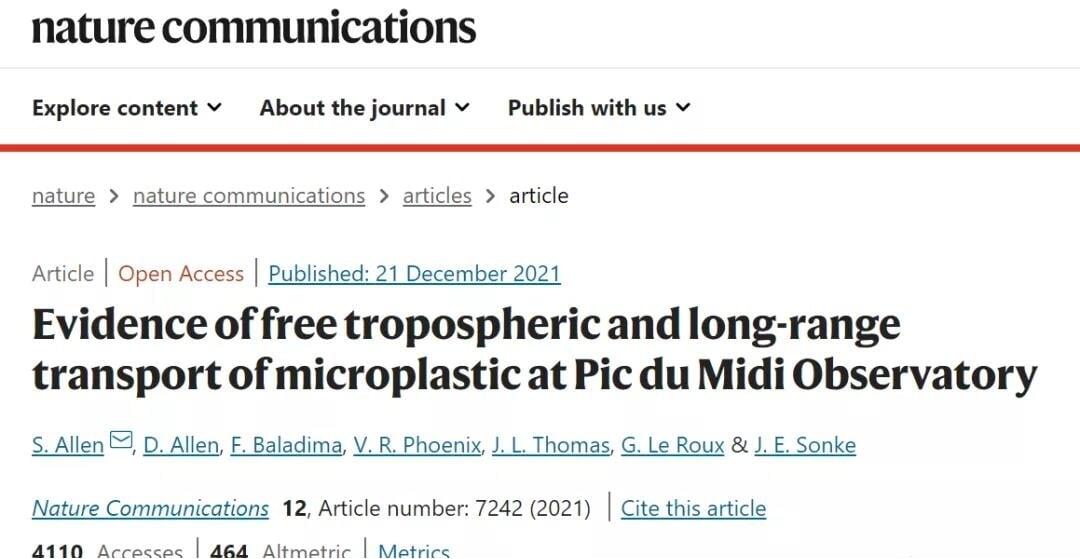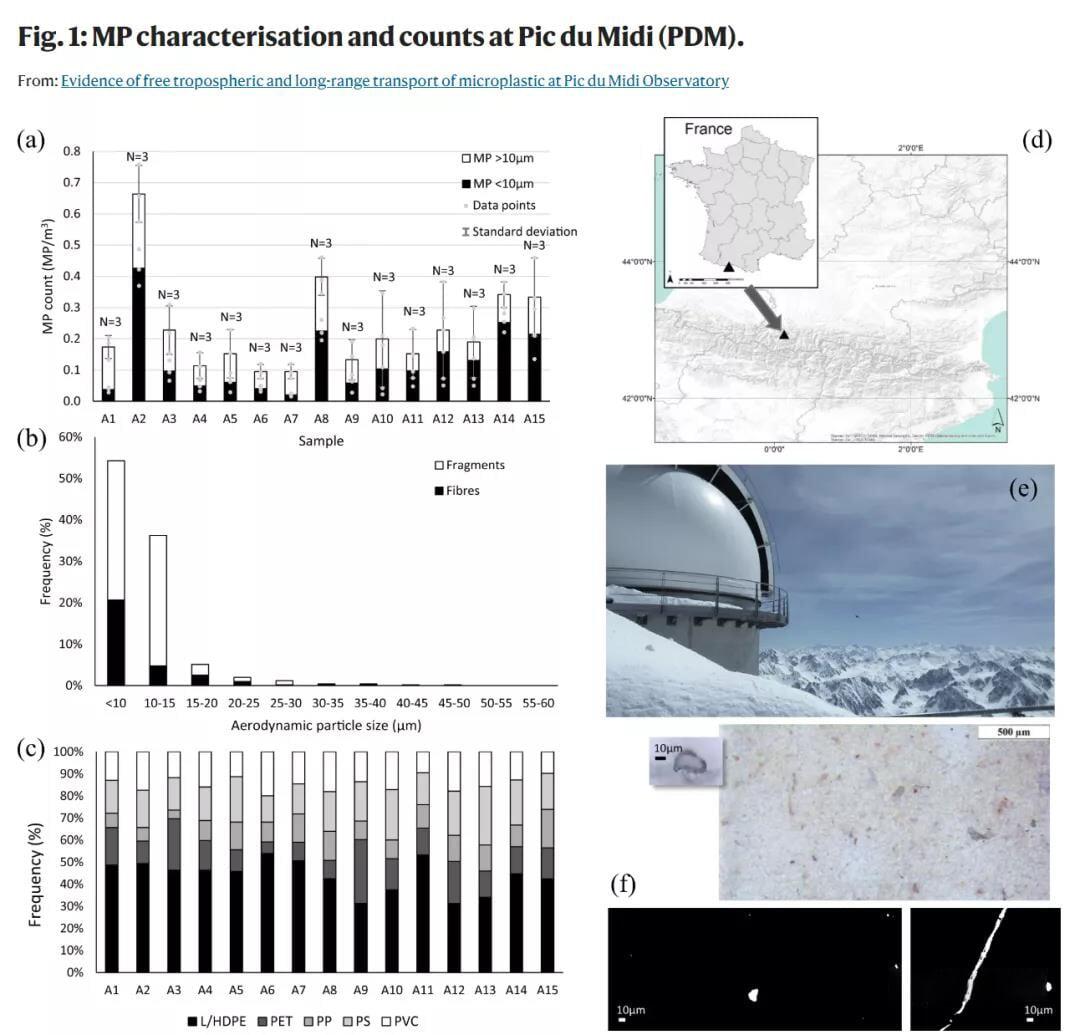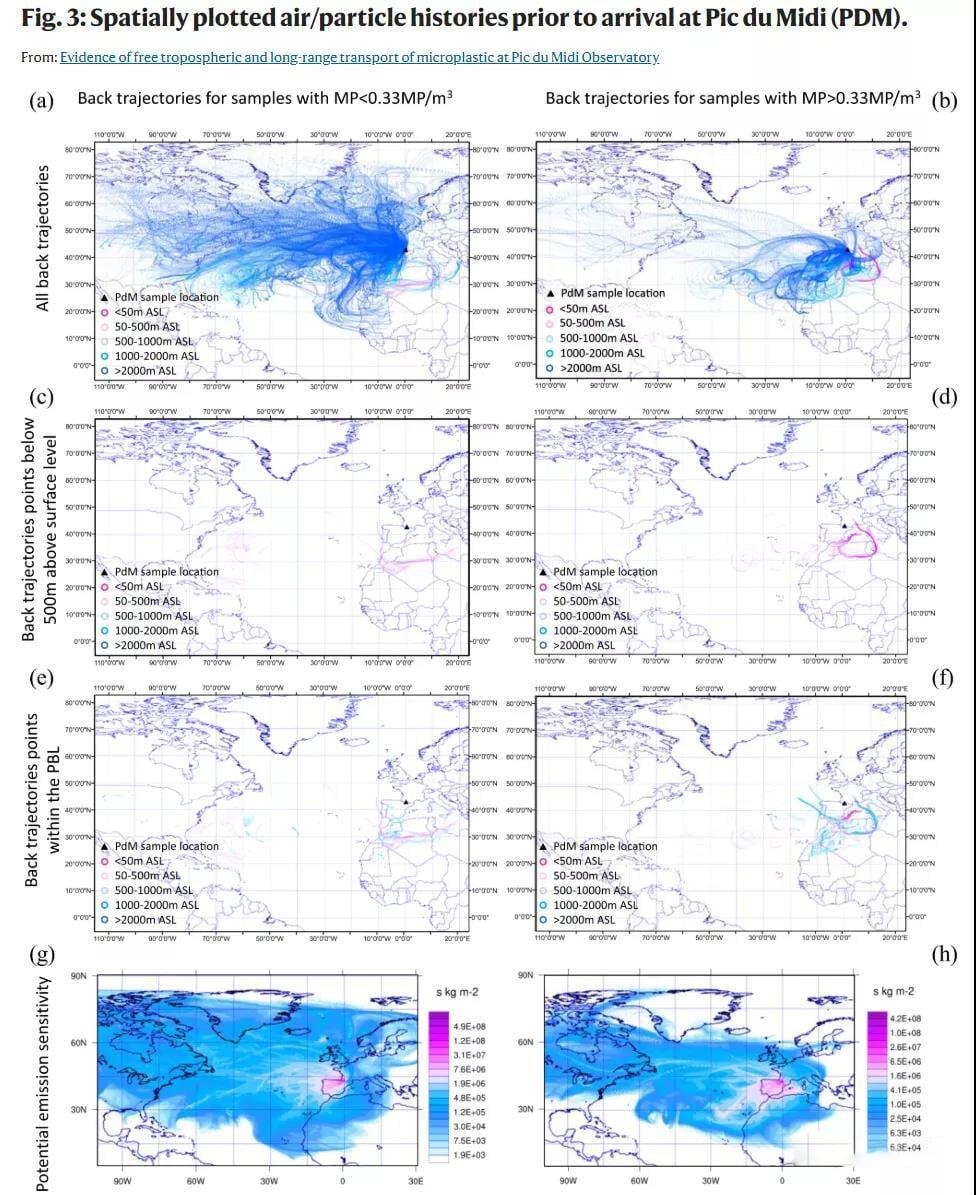A recent study published in Nature Communications found that microplastics found on top of the French Pyrenees may have traveled 4,500 kilometers across continents and oceans in the troposphere.
The troposphere is the lowest layer of the atmosphere, and a finding suggests that these particles can travel around the world, reaching even the most remote areas.

Microplastics are tiny pieces of plastic, each less than 5 millimeters in diameter. They were previously found in a lower region of the troposphere called the boundary layer, where air and the Earth's surface rub together and wind speeds are relatively low. Now, for the first time, there is evidence that microplastics can travel higher in the troposphere, an altitude that is not affected by the friction between air and the Earth's surface. In this atmosphere, known as the "free troposphere," higher wind speeds give microplastics the potential to travel farther than is known.
"Once microplastics enter the free troposphere, it's the equivalent of driving into a superhighway. There the winds are high and there is very little rain, so pollutants are not removed by rain and travel much faster than in the planetary boundary layer below." said Steve Allen of the University of Scleraide in the United Kingdom, one of the research team members.

"We weren't surprised that it was there, but we were sad." Deonie Allen, also a member of the research team from the University of Scleraide, said, "These tiny particles are excellent contaminant transporters, and they act like Velcro, collecting viruses and other contaminants as the particles move around." At the Pic du Midi Observatory in the Pyrenees in southwestern France, researchers captured 15 samples of microplastic particles over the course of several months. The observatory is located at an altitude of nearly 3,000 meters, which provides access to the free troposphere.

The team used computational models to map out the likely path of microplastics in the week before capture. The models cover data on global airflow movements and take into account the size and density of the microplastics. The analysis showed that these particles moved an average of about 4500 km in the free troposphere. Potential sources include the United States, Canada, North Africa, the United Kingdom, the Mediterranean Sea and the Atlantic Ocean.
"Some of the samples we've gotten show its coming from the ocean and managing to get into the free troposphere." Steve Allen said, "This basically completes the whole cycle that we think plastic is going through - it doesn't stay anywhere, it never sinks, it just goes somewhere else for a transit."

Most plastic particles are between 5 and 20 microns in diameter. These particles can be inhaled and can cause breathing problems.
"It's the size of the particles you inhale that cause respiratory illness, and it's what makes you cough and have asthma." Deonie Allen said.
Using lasers, the team determined that the most abundant type of plastic among them was polyethylene, which is commonly used in plastic packaging.
"Developed countries think they are getting rid of plastic waste by shipping it overseas to be burned or landfilled elsewhere in the world, but that's not the case. Plastic waste makes a comeback in a few weeks. Nature has no borders." Steve Allen said.

